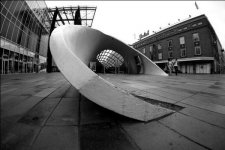The choice of lenses is so personal that its impossible to answer. I for example prefer longer lenses to wide angles and my favourite lenses for this camera reflect this. But the NEX is so flexible , having such a close flange distance, that almost any lens can be used on it. I have tried Leica M and LTM lenses (wide, normal and tele), Voightlander lenses in the same mounts, Nikon SLR lenses (old and recent), Pentax screw mount and Canon Fl mount lenses.
The lenses I prefer on the day will depend on how I feel, the type of photography I am planning, whether the NEX is to be my main camera on the day or a backup etc. The lens that is presently on my camera is a 1960 90mm f2.8 Elmarit in chrome. But this is unusual and a 50mm would be more common for me.
I find that the NEX works well with fast legacy lenses but is a bit slow to focus manually. This is because although the "focus peaking" function can help focus a lens its much less reliable with fast lenses shot wide open in which situation it's more accurate to rely on the focus-zoom function to enlarge the onscreen image and focus by eyeballing a portion of the subject. But with legacy lenses this requires some button pressing and that takes time and requires you to move the camera from the taking position. Great for static images - not so great for moving subjects, especially of course when the lens is fast and being shot wide open and DOF is correspondingly small.
As for bad light, one very good thing about the NEX is that as you are viewing the scene via an LCD, the camera automatically adjusts what you are seeing to give a bright image. Unlike an optical viewfinder which would be dim in this situation.
On balance I am happy with the NEX and have no plans to change any time soon.
Most of my relative contentment with the camera comes from its ability to mount a wide range of lenses - I seldom use the kit lenses which I have to say are pretty mediocre. The latter I put down to (a) building lenses to a price, (b) an auto focus system which too often picks the wrong focus point (rectified by relying on a single centre focus point) and (c) stretching the bounds of technology caused by having a large sensor in a small body with minimal flange distance. This has resulted in image edge performance which is quite ordinary with the kit lenses.
As a result the camera really only shines when you combine it with good legacy glass.



